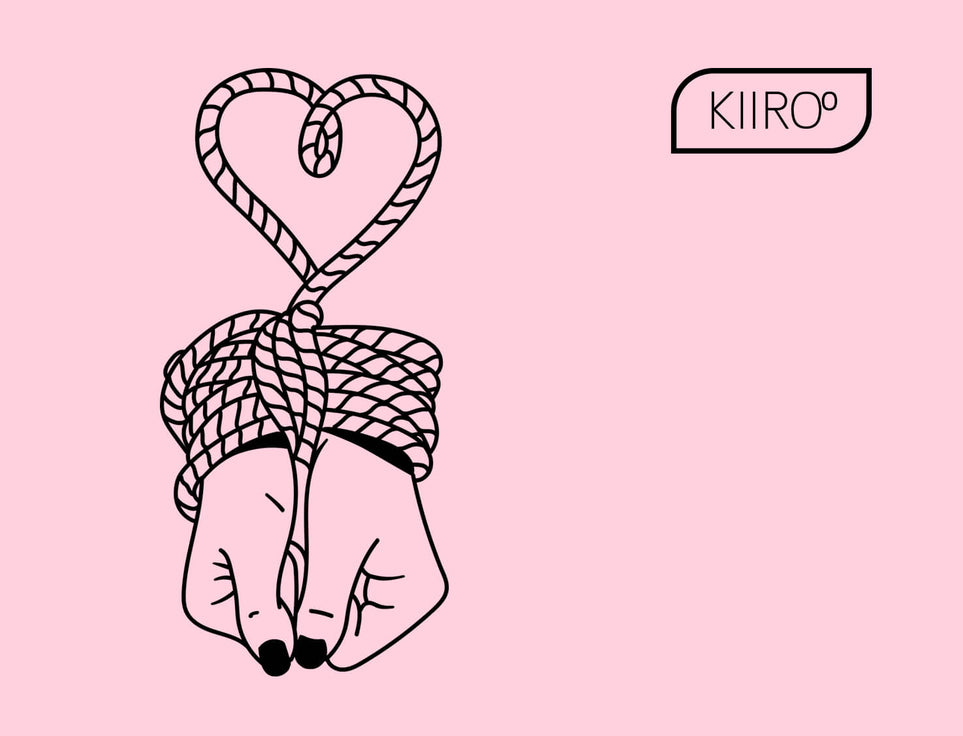Shibari 101
Shibari - it has a ring to it, right? When it comes to bondage, it’s assumed that it’s mainly practiced for sexual gratification, but there’s much more to it than that. Shibari, Japanese rope bondage, is serious art.
While you may want to jump into practicing it, it’s not something to take lightly. In this guide, we’re going to educate you on what Shibari is and how to safely practice it. This is the ultimate guide to learning Shibari for beginners.
What is Shibari?
While you may have heard of it, do you really know what it is? Shibari means “to tie” in Japanese and is traditional Japanese rope bondage. This form of rope bondage evolved from Hojojitsu, the martial art of restraining prisoners with rope from the Edo period.
Shibari differs from Western rope bondage in a couple of ways: Shibari uses non-stretchy natural fiber rope, typically jute or hemp. It focuses on friction and wraps rather than knots; it uses a bight.
There’s a heavy focus on the aesthetics of the ties and tight binding. It uses various designs and patterns to create ties, using the body’s natural curves for a sensual or painful experience - whichever the restrained prefers.

Is there a difference between Kinbaku and Shibari?
You may have heard of the word Kinbaku and wonder if it’s different from Shibari. Well, the community has a divided opinion on it. While some people believe Shibari and Kinbaku are the same, others believe there is a significant difference.
Some Japanese rope bondage enthusiasts believe that ‘Shibari’ is bondage tying, while Kinbaku is ‘Shibari plus emotional connection.’ However, today, most people interchangeably use these two terms.
What makes rope bondage Shibari?
There are three components that make rope bondage Shibari. It includes:
- It must have intricate and beautiful knots and ties.
- It must restrain.
- It must follow the Japanese aesthetic.
How to practice Shibari for beginners
In order to enjoy the complete pleasures of Shibari or learning the art of it, here are some steps for beginners and tips to get started and enjoy.
1. Study Shibari beforehand
While you’re excited to jump right in, it’s important to learn as much as you can about it before touching a rope. Watch videos online and join Shibari forums to help you gain simple Shibari study and knowledge.
Become acquainted with common terms such as:
- Scene time: the time spent using your skills while tying or being tied.
Bottom: the person being tied.
Rigger/Top: the person who’s tying their partner.
Suspension: an advanced skill that has the bottom lifted off the ground.
Floor-play: rope play that’s performed on the floor.
Self-tie: shibari self-tie is when a person ties themselves.
Single column tie: a single column tie is the foundation for every tie you will learn.
Rope switch: someone who enjoys being a bottom and rigger.
Safewords: a word(s) that’s agreed upon before the scene time that signals the end to an activity.
2. Find a mentor
When practicing Shibari for beginners, you want someone with experience to help teach you. Find a mentor who will invest the time and energy in helping you develop your Shibari knots and ties and body part placement while helping you build trust.
3. Start slow and small
Like anything, you need to start off small, developing your knowledge and skills before investing in more accessories and items. For Shibari knots and ties, you need natural rope and the desire to learn. That’s it.
4. Learn the basic ties
Before even thinking of suspension, you need to master the basic ties and knots. While bondage consists of many different ties, the first one you need to learn is the single-column tie.
It’s the foundation for everything else you’ll do in Shibari. A single-column tie is your starting point and a tie you must know before moving ahead.
5. Practice with people who you trust and who trust you
You want to practice with people you’re comfortable having honest conversations with because with Shibari, you’ll need to discuss boundaries, consent, and desires. If you don’t feel comfortable with your partner or mentor when practicing, they’re not the right fit for this.
6. Try both sides
You may think that you’re set on being a rigger, but how do you know? Have you tried being tied up (I’m not talking about Shibari self-tie, I mean being tied by someone else)? Do you know how the pain and pleasure feels?
With a partner you trust, allow yourself to feel the other side. It’ll improve your understanding of it, your needs, and give insight into your partner’s perspective.
7. Practice a lot
Many people do not improve their Shibari ties and knots because they simply don’t practice. If you want to truly enjoy it, then you’ll need to practice.
That’s it. There’s no way around it. If you want to become a master, you’ll need to put in the hours.
8. Find a rope club
Practicing alone can be challenging; however, when you’re in a club, you’re in a group where everyone learns the same rope ties and knots as you at a specific time. Join a rope club - it’ll push you to practice and help you develop a firm grasp of the basic ties, which is crucial in Shibari.

How to safely practice Shibari?
Like any form of rope bondage, if practiced improperly, it can be dangerous. Even with the right training and safety precautions, nerve damage or other forms of physical damage can occur. Luckily, with more people practicing it, there are more resources for people to connect with.
Get proper training
Before even thinking of buying rope, you need to educate yourself on how to use the rope and other aspects of Shibari. Proper training will give you a thorough step-by-step process of basic body anatomy.
It is important to know how to tie intricate and beautiful knots and where to tie on the body. For example, the armpit is a body part where you do not tie under. Invest in a Shibari course - it’s well worth the money.
Floor work first, then suspension
Learning any Shibari knots or ties should be done on the floor and not tied to any suspension points. Once you have the knowledge and skill, then you can take on more advanced positions.
Check-in with your partner
Whether you’re the one who’s restrained or the restrained, it’s incredibly important to communicate with each other throughout the session. Before practicing Shibari, or any form of rope bondage, create safe words or actions with your partner and make sure to check-in with them throughout the session to prevent any nerve damage or serious injury.
If you’re thinking about trying Shibari, you definitely should. However, make sure you follow this guide and take the necessary steps forward to ensure you practice Shibari safely.
WRITTEN BY
Natasha Ivanovic
Natasha Ivanovic is an intimacy, dating, and relationship writer best known for her writings on Kiiroo, LovePanky, Post Pravda, and more. She's the creator and author of her short stories on TheLonelySerb. She completed her first degree in Criminology and continued and finished her Masters in Investigative Psychology, but then decided to follow her true passion of writing.
Discover more of Natasha's Work
THIS ARTICLE WAS ORIGINALLY PUBLISHED ON KIIROO.COM ON 29 SEPTEMBER 2021.
See how Kiiroo products measure against other companies. View our comparison table.


















